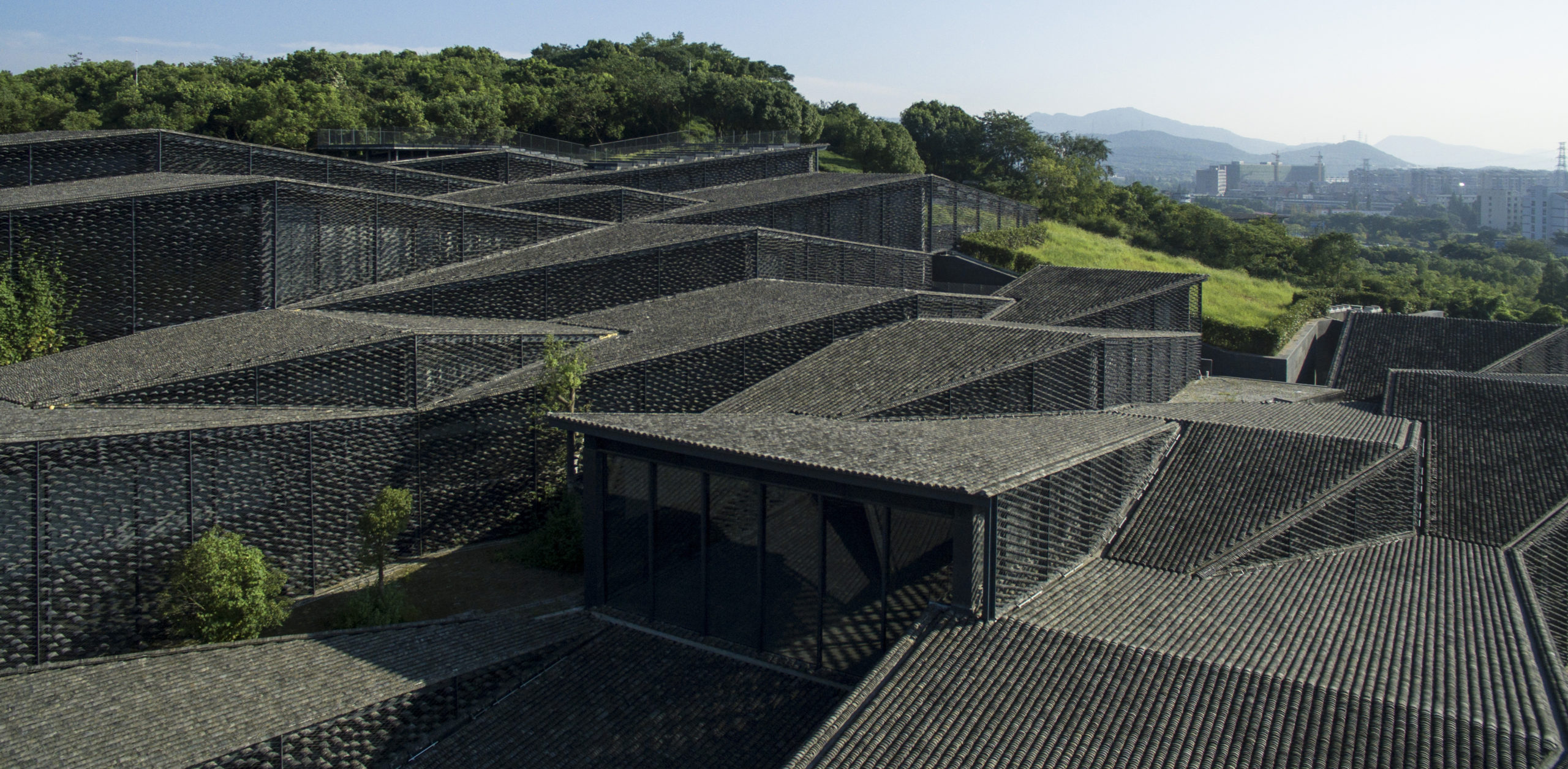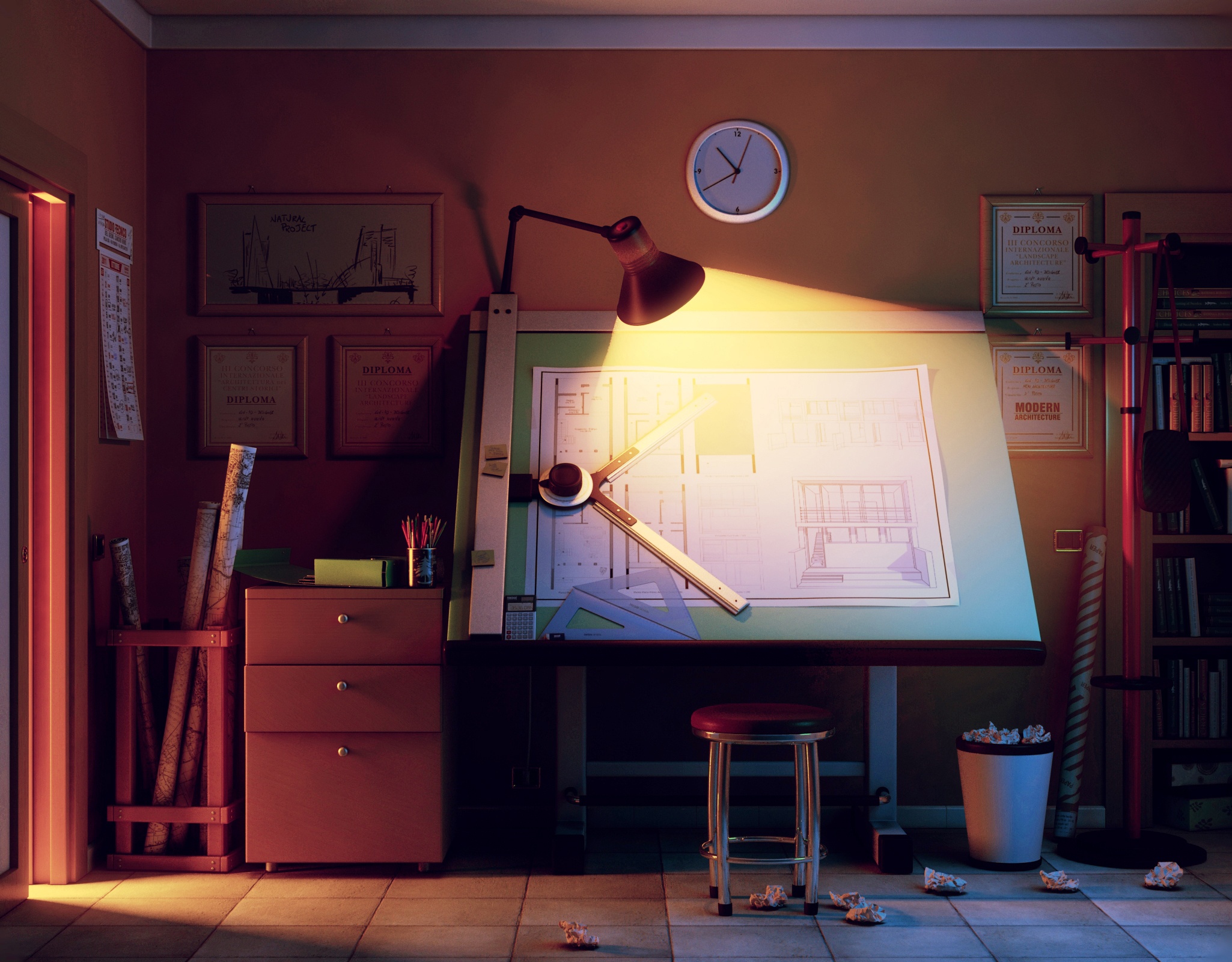Architects: Want to have your project featured? Showcase your work by uploading projects to Architizer and sign up for our inspirational newsletters.
Landmark architecture often begins with a strong, singular concept. This is especially true in Qatar, where a rise in modern buildings is defining a national image rooted in symbolism.
As one of the country’s latest monumental works, Ateliers Jean Nouvel’s National Museum of Qatar set out to address the contradictions and contrasts between Qatar’s past and present. Harnessing one of the region’s most distinctive natural features, the design was inspired by a flower-like aggregate of mineral crystals known as a desert rose.
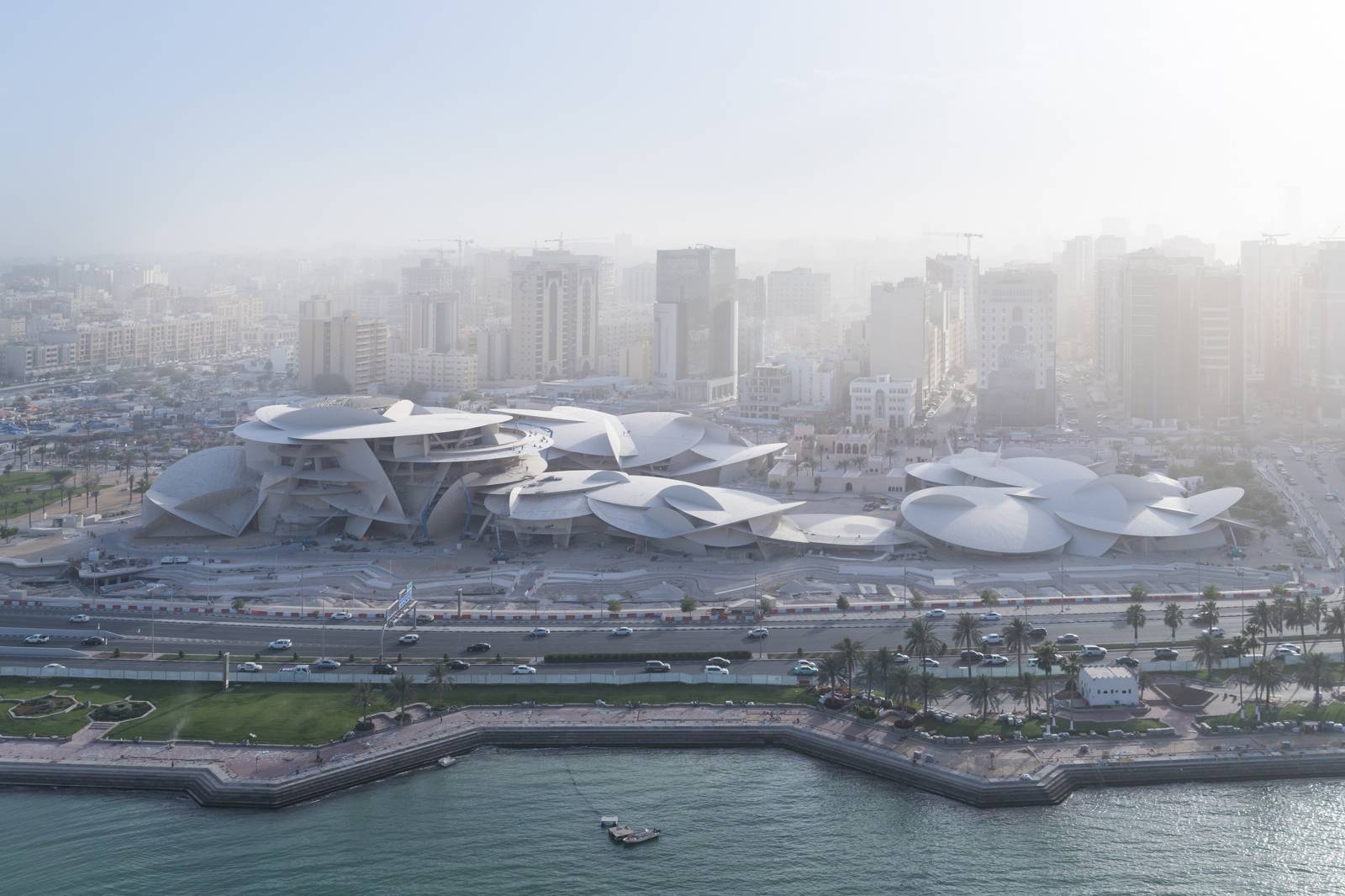 As Nouvel explains, the museum emerges from a desert that has ventured all the way to the sea. On the site, the Royal Palace of Sheikh Abdullah bin Jassim Al Thani rises up, a twentieth-century landmark of major heritage value to Qatar.
As Nouvel explains, the museum emerges from a desert that has ventured all the way to the sea. On the site, the Royal Palace of Sheikh Abdullah bin Jassim Al Thani rises up, a twentieth-century landmark of major heritage value to Qatar.
As the new museum is dedicated to the history of Qatar, it was made to evoke the desert’s eternal dimension and fluidity. Taking the desert rose as a starting point, the team designed a building 350 meters long with a series of large, inward-curving disks. These iconic disks define the museum’s formal approach and spatial experience throughout.
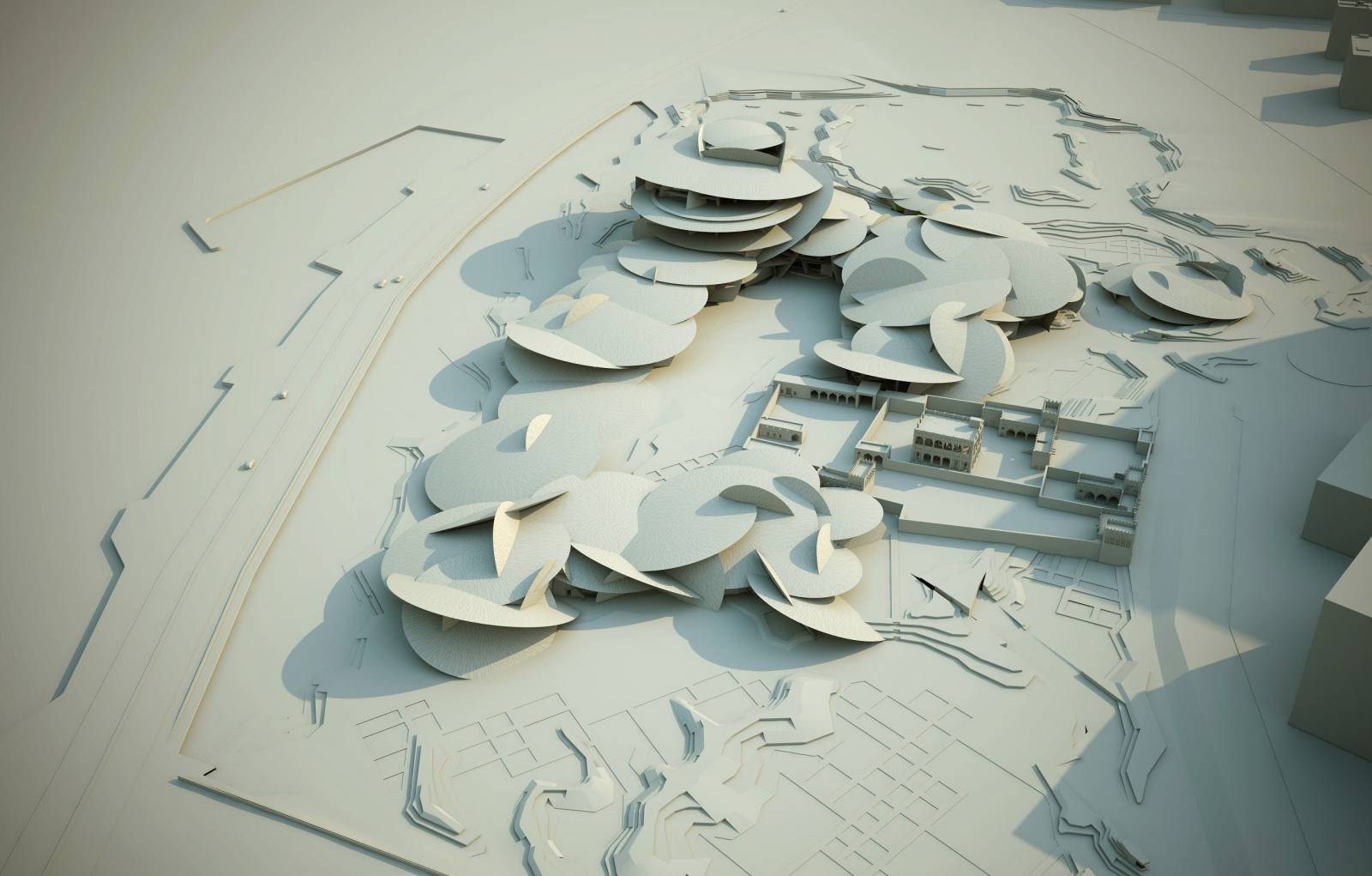
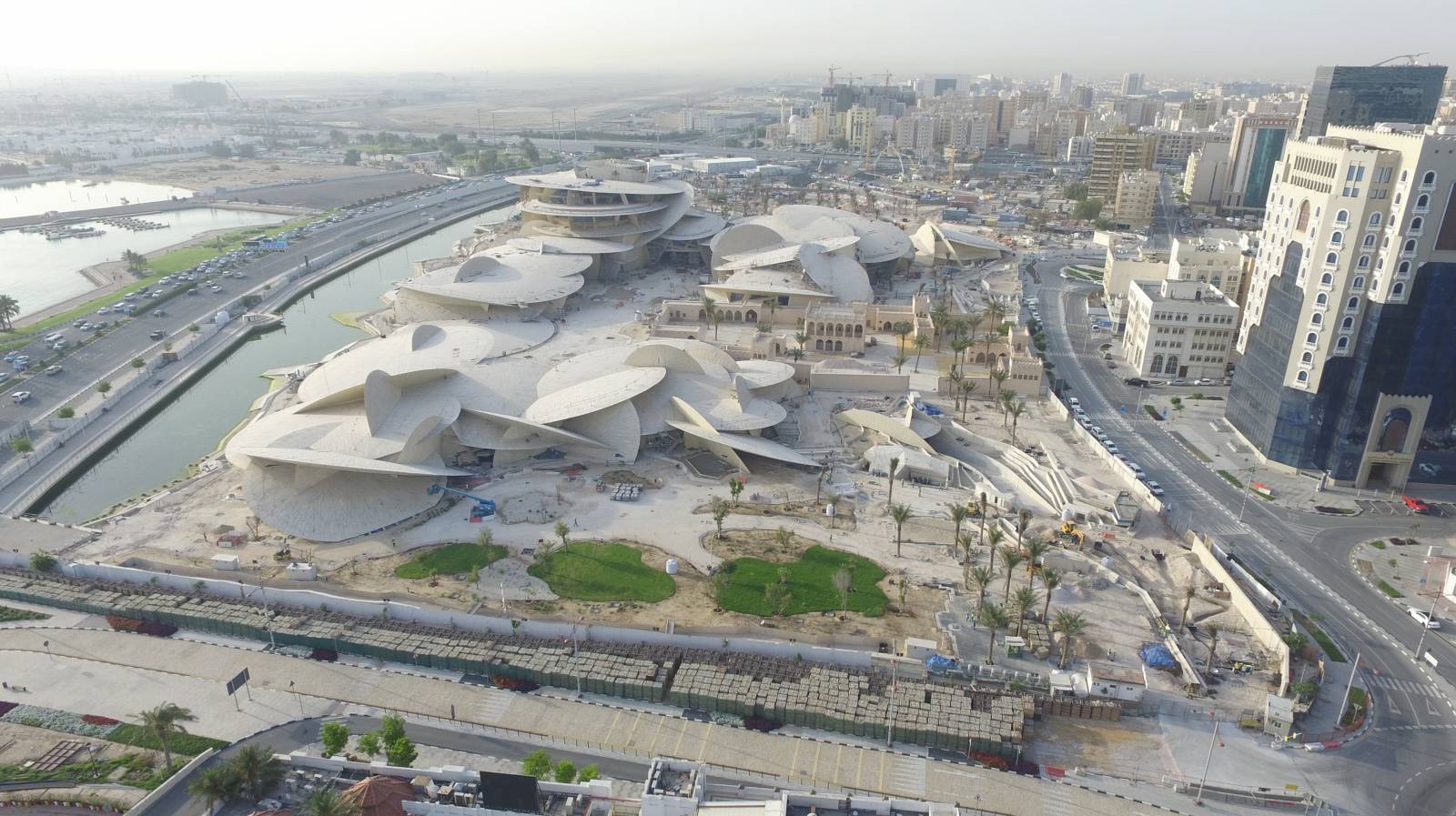 The skin of the building is made of a high-performance glass fiber-reinforced concrete that possesses the same sand color inside and outside the building.
The skin of the building is made of a high-performance glass fiber-reinforced concrete that possesses the same sand color inside and outside the building.
This GFRC layer was segmented into a series of panels along the building disks, each ranging from 46 to 285 feet in diameter. Internationally renowned consulting firm Arup provided most of the engineering disciplines, including the primary steel structural system. Their task was nothing short of epic — the museum comprises some 539 disks of 30 different sizes.
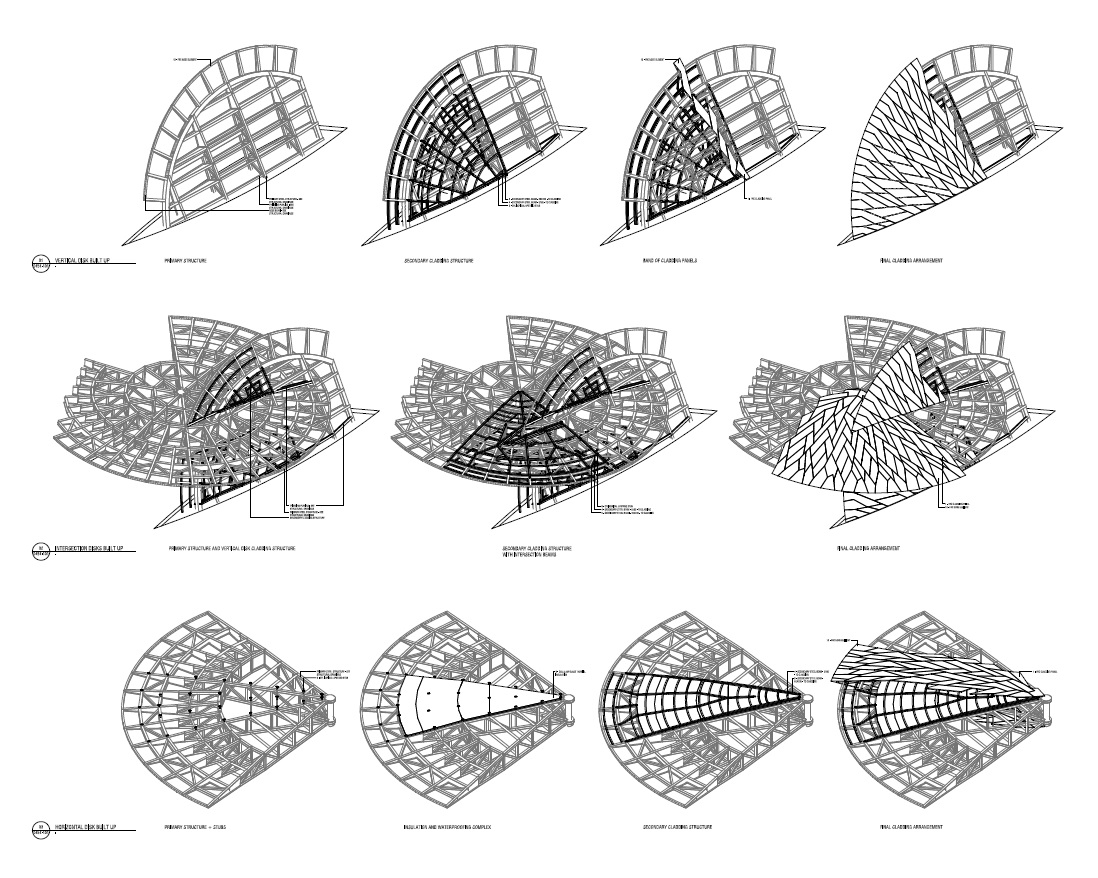
National Museum of Qatar Structural Drawings; courtesy Ateliers Jean Nouvel
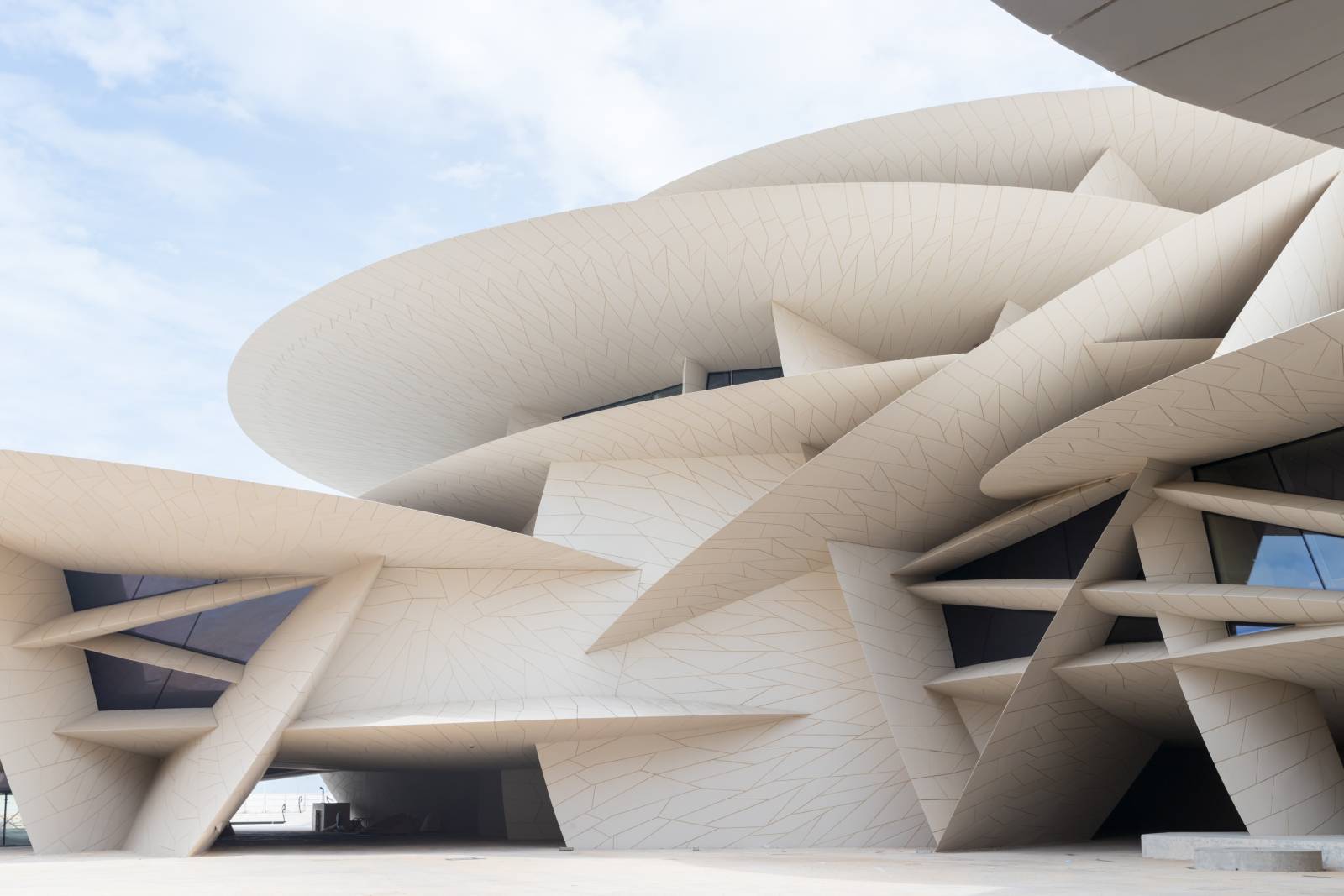 Stuttgart-based Werner Sobek worked on the design and engineering of the secondary structure that connects with the external cladding: 76,000 Fibrex panels made from 3,000 master molds. Stainless-steel embeds cast into the panels connect them to the substructure.
Stuttgart-based Werner Sobek worked on the design and engineering of the secondary structure that connects with the external cladding: 76,000 Fibrex panels made from 3,000 master molds. Stainless-steel embeds cast into the panels connect them to the substructure.
The orientation of the disks add to the building’s energy efficiency. When the sun hits the building from the east or west, the disks cast long protective shadows that help to keep the interior spaces cool.
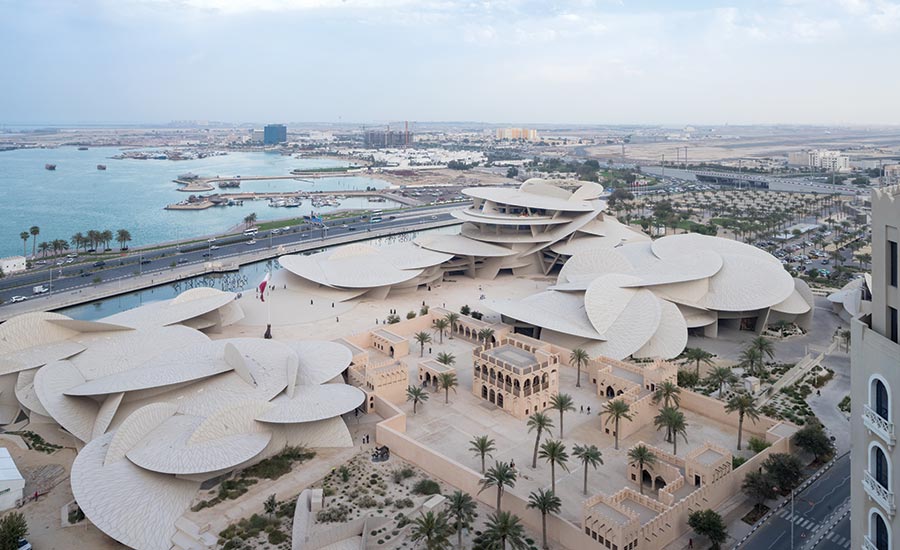
National Museum of Qatar; photograph by Iwan Baan
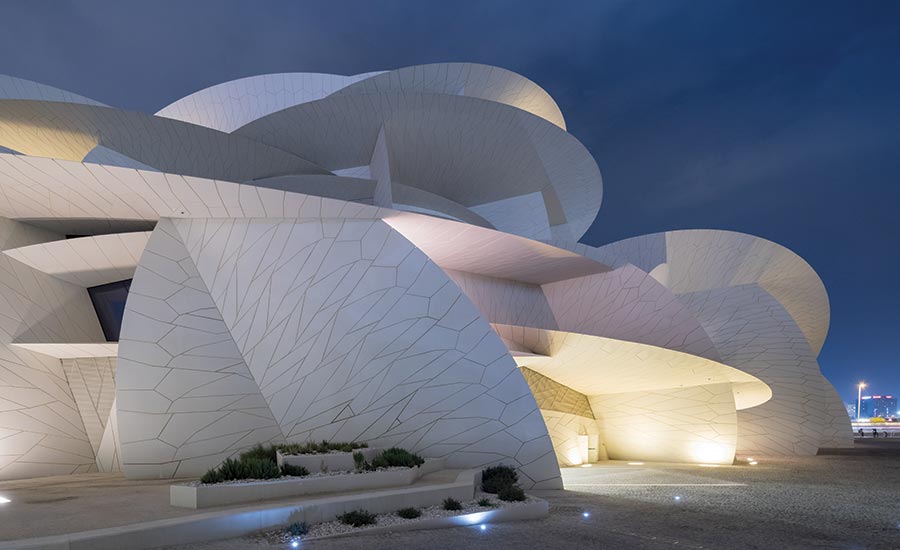
National Museum of Qatar; photograph by Iwan Baan
The large openings around the structure offer glimpses of the Howsh, the museum’s gardens and Doha Bay. The permanent exhibitions, focusing on the environmental, cultural and political history of Qatar, are on display in 11 galleries.
Formally, some disks are ‘horizontal’, their edges resting on other disks at different angles. The ‘vertical’ disks constitute the building’s support and transfer the loads of the horizontal planes to the base. Like the exterior, the interior is a landscape of intersecting disks.
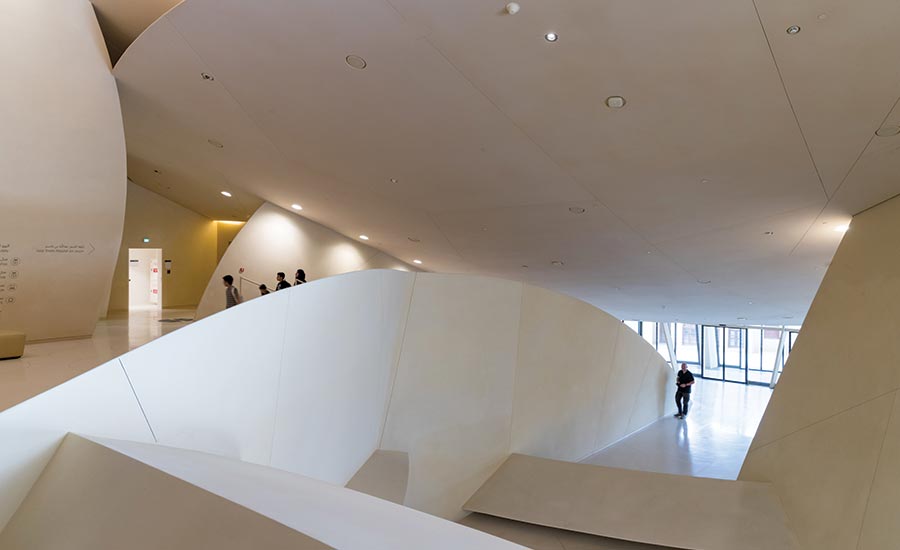
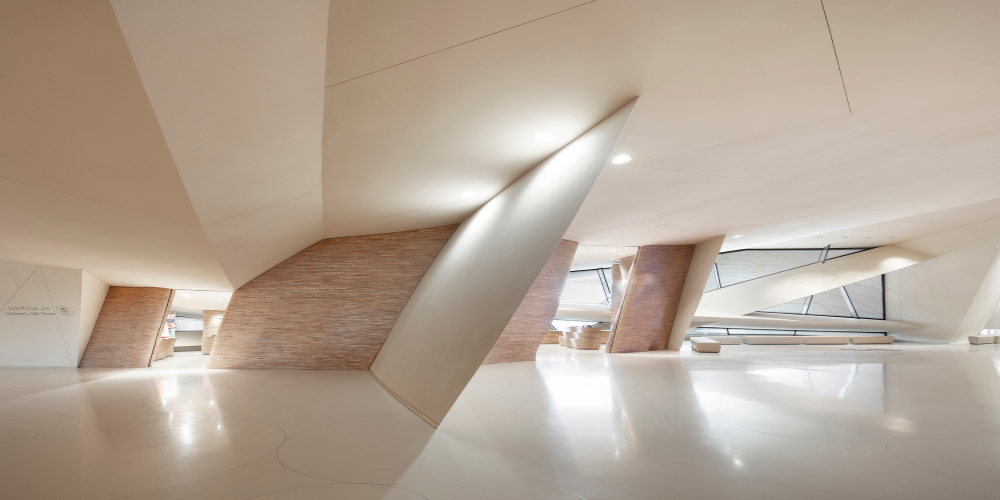
National Museum of Qatar interior spaces; photographs by Iwan Baan
The disks slice through one another, resulting in a construction made of complex geometric spaces. Inside, you find spaces that don’t exist anywhere else in the world, creating a unique experience for viewing art and traversing between exhibition halls.
A number of floors are on an incline, with ramps bridging the gap between interior spaces. For circulation around these forms, an interior circuit forms a loop, creating a sequential journey for visitors that ends in the discovery of the old Royal Palace.
Architects: Want to have your project featured? Showcase your work by uploading projects to Architizer and sign up for our inspirational newsletters.
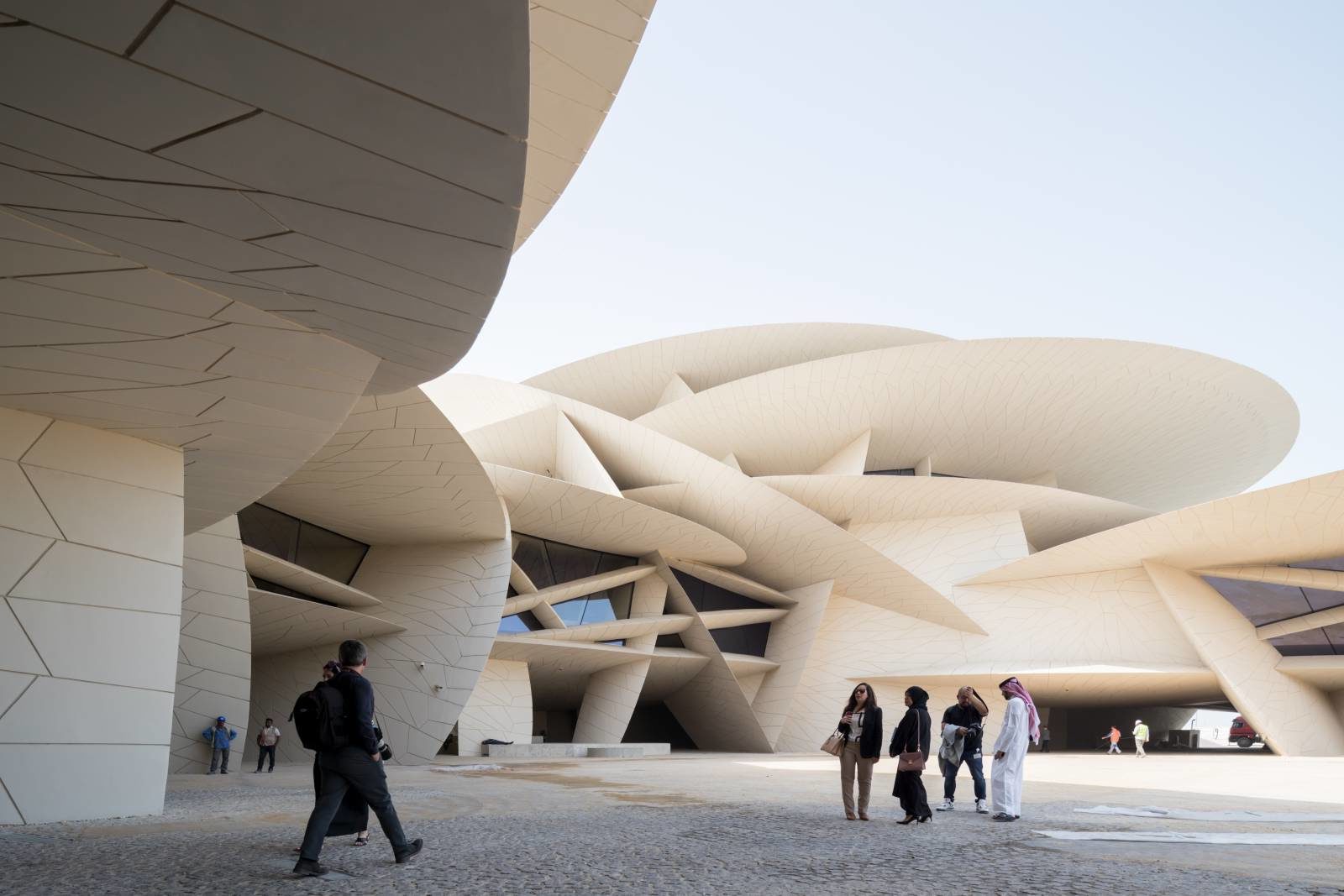
 National Museum of Qatar
National Museum of Qatar 